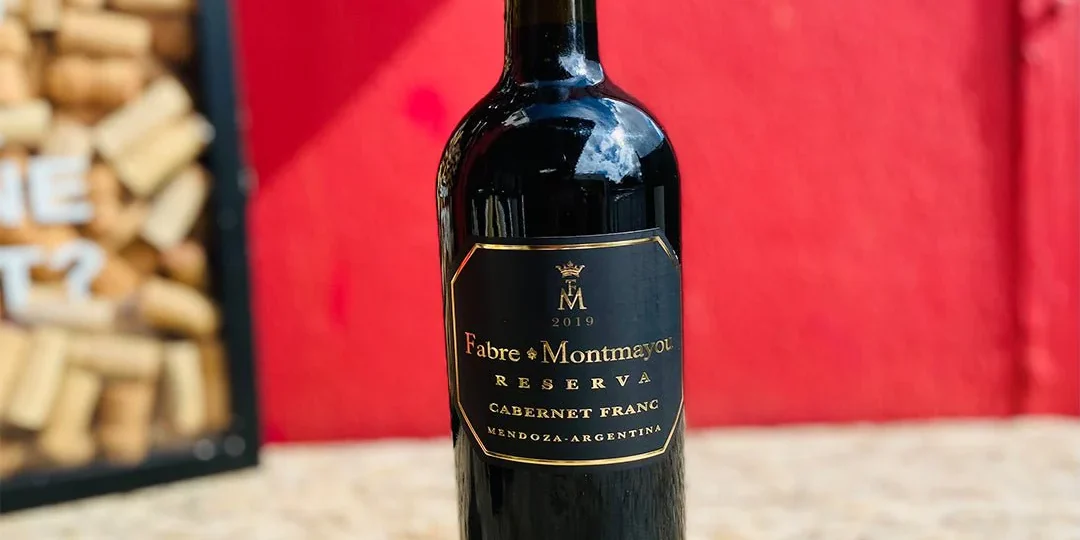May 2025 Red & White
Reds
Fabre Montmayou Reserva Cabernet Franc, Mendoza, 2023
Hervé Joyaux Fabre, owner and director of Fabre Montmayou, was born in Bordeaux, France to a family of wine negociants. When he arrived in Argentina in the early 90’s looking for opportunities to invest in vineyards and start a winery, he was impressed by the potential for Malbec in Mendoza, and shocked by the number of neglected top notch old vine vineyards available for purchase. At this time pulling out old vines and replanting with new higher yielding more predictable clones was all the rage. Hervé Fabre knew he needed to act immediately. Within months he purchased the first of what would be many old vine, high elevation vineyard sites under his control- an impeccable 37 acre spread in Vistalba planted with original rootstock Malbec vines in 1908. Shortly after, Herve built a Chateau style winery on the property and continued purchasing old vine parcels throughout the country. A Patagonian winery was constructed in the Rio Negro region ten years later.
At present the family owns 217 acres of vineyard land in Mendoza (Vistalba, Compuertas, Tupungato) and 122 acres in Patagonia (Allen, General Roca). All wines are estate grown, farmed using traditional methods without the use of herbicides, and fermented with native yeasts.
This Cabernet Franc has an intense red colour. Elegant on the nose, with red and black fruit aromas with hints of mint. This wine is fresh and well balanced, with a long finish.
Bold & structured, this wine is best served with lamb stew, pork, game or chocolate desserts.
Product Reviews & Accolades:
Argentian Cabernet Franc Trophy from the IWC 2023
Domaine de la Solitude GSM, Côtes du Rhône, 2023
The Wine Estate “Domaine de la Solitude” belongs to one of the oldest families of Châteauneuf-du-Pape, whose roots go back to the 15th century. In the 17th century, Hélène Barberin, a descendant of the illustrious Tuscan family of the same name, married Claude Martin, owner of a vineyard in Châteauneuf-du-Pape. Their grandson would give a huge boost to “La Solitude” by creating the first label for the Appellation. Thus, “le Vin de la Solitude” became a symbol of quality and began to be exported, allowing a great terroir to come into its own. Eight generations later the Estate is still a family affair and is now run by Florent Lancon.
The grapes used to make this wine are grown in the stony, limestone and clay terroirs typical of the southern Rhône Valley. It is a blend of three emblematic varietals: Grenache Noir (45%), Syrah (45%), and Mourvèdre (10%). The destemmed grapes are vinified in concrete vats and then aged in concrete and stainless-steel vats for a year.
The wine is a beautiful ruby-red colour with an intense nose of red berries and spices, including pepper from the Syrah. It is supple and generous and supple on the palate with a very fine and elegant tannic structure while still showing finesse.
Perfectly paired with cold meats, grilled red meats, but also of Asian cuisine (particularly in sweet and sour sauce) or Italian, and almost any cheeses. Also great as an aperitif!
Whites
Karl Josef Riesling Piesporter Michelsberg Kabinett, Mosel Germany, 2023
The picturesque Mosel river valley is one of the world’s great wine treasures. Many Mosel wines flirt with perfection, but the region’s true virtue is that nearly all its vineyards will produce distinctive, delicious Riesling if tended with care. The climate here is cold for wine grapes, but the Mosel has a few tricks that turn this liability into an asset: steep slopes, slate stone soils, and the river itself. Together these factors maximize the long, sunny growing season and provide just enough heat to slowly ripen grapes and develop Mosel Riesling’s unique character with stunning clarity.
Karl Josef is produced by Moselland, a grower’s cooperative famous for producing premium quality wines at competitive prices. What is a grower’s cooperative, exactly? A cooperative is a group of wine grape growers who share their resources to produce, bottle, and market wine. Making wine independently requires investment and time that is practically beyond the means of most farmers. Cooperatives play an essential role by providing growers with access to economies of scale, a vocal role in production, and a fair share of profits. This approach also provides a tremendous benefit to consumers. Well run cooperatives like Moselland are a prime source for excellent wines at lower prices. Moselland was formed in 1968 when several small cooperatives merged. It is now based in the famous twin wine towns of Bernkastel-Kues, in the heart of the middle Mosel river valley. Moselland produces wines from all over Germany in a range of styles, and Riesling is their specialty.
This wine shows a light straw color and carries a classic petrol aroma mixed with florals, green apple, lemon-lime citrus, and tangerine. Aromas carry to the palate with the addition of pear, ripe pineapple, lemon zest, and wet stone minerality. This is an off dry wine that is balanced with high acidity and medium minus body. The old vines render a good concentration of flavors and a nice finish.
Excellent with appetizers, salads, seafood, chicken and fish, and light pasta dishes. Also makes a refreshing aperitif.
Clos Palet Vouvray, Loire Valley, 2023
The Domaine Clos Palet is run by François Chainier,and is acknowledged by top professionals in the wine trade as one of the best houses for Chenin Blanc in the country. The grapes underwent a quiet, long pressing and strict juice selection, followed by 24 hours of settling. A second sorting was carried out prior to the alcoholic fermentation and took place in stainless steel tanks. Temperature was monitored over the course of a month and a half and the lees were stirred every day to ensure a smooth fermentation. Following fermentation, the wine was racked and aged in stainless steel tanks on its fine lees for four months in troglodyte cellars.
This wine shows pale lemon in color with tints of green, with pronounced aromas of honeysuckle, and acacia flowers with bruised yellow apple, sweet bosc pear, apricot, melon, lemon, citrus, & mineral on the nose. On the palate, it is well balanced between round and crisp, with flavors including chamomile, tangerine, quince, almond, and marzipan. Bright high acidity that is balanced by the slight off dry sweetness and the lees aging roundness. The wine is medium minus in body with a memorable finish.
This wine will pair nicely with grilled fish, selfish and roast poultry. But it is also to be enjoyed as an aperitif on its own!








